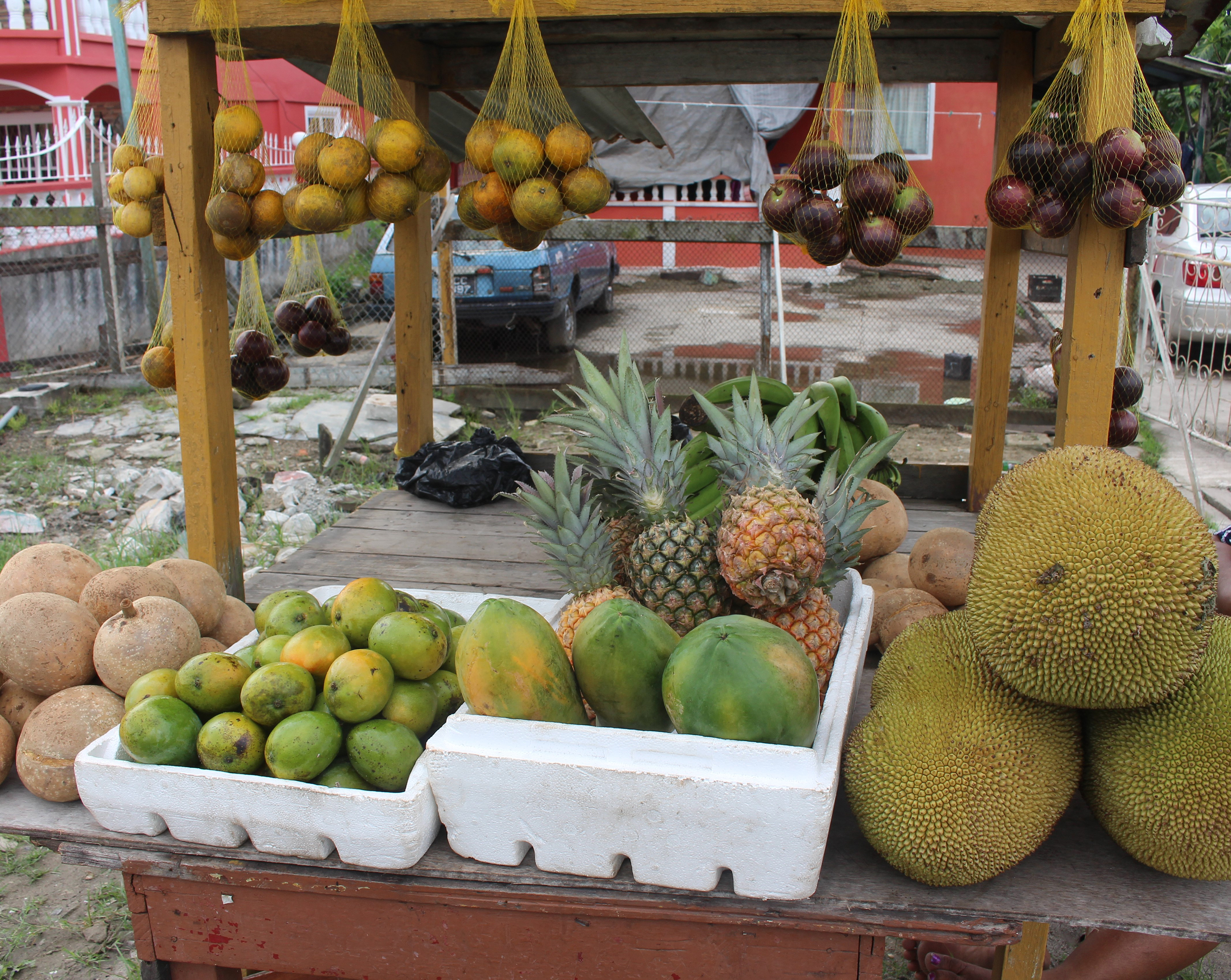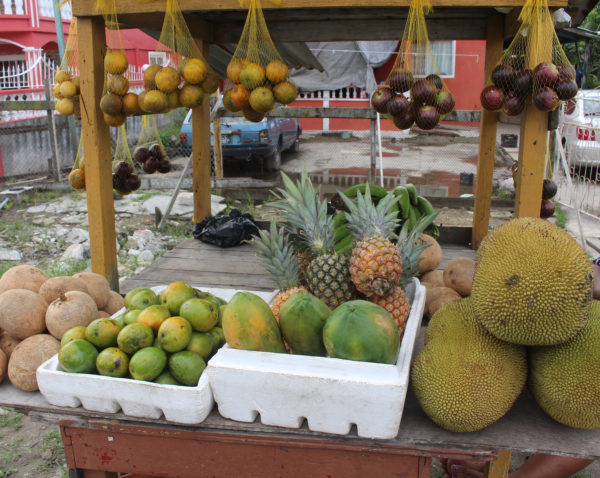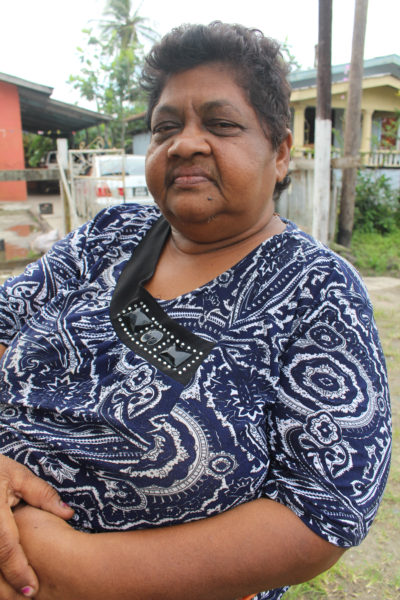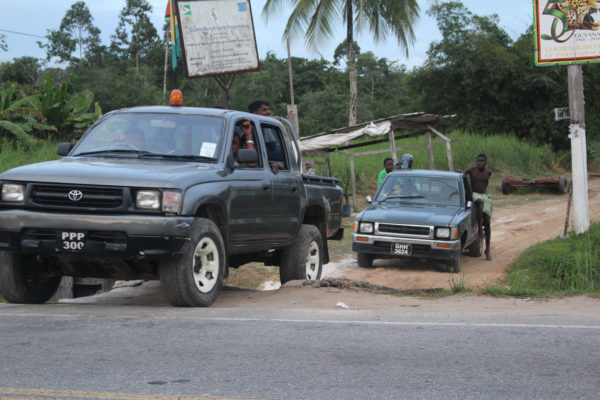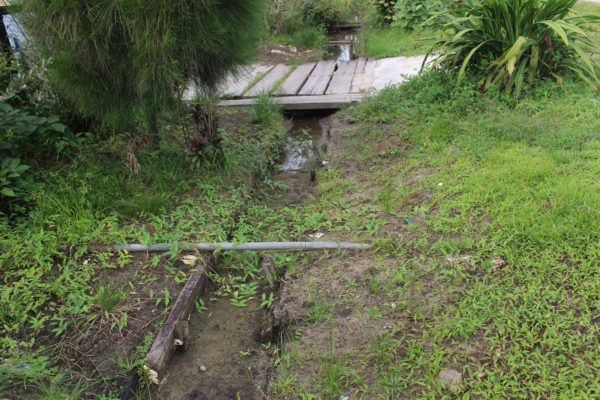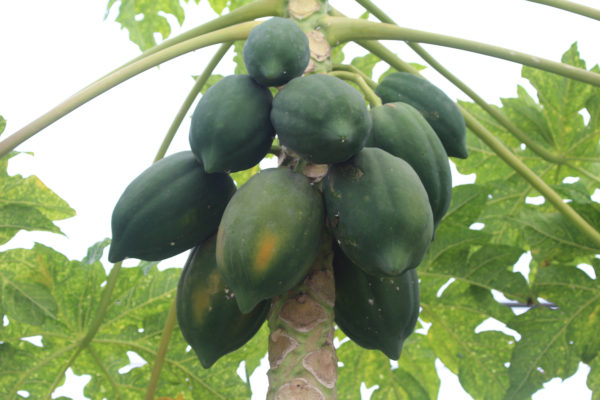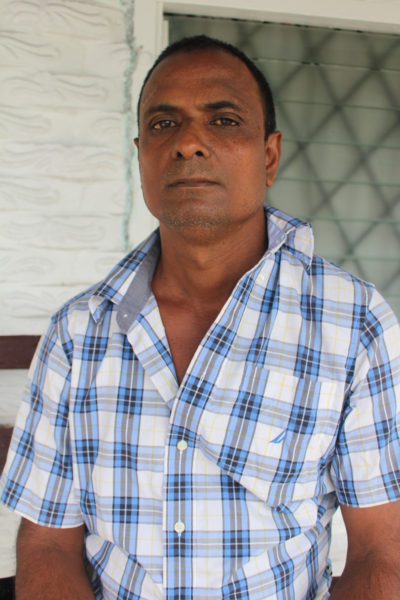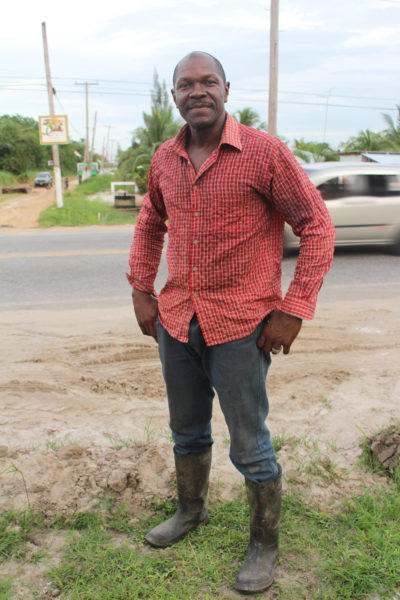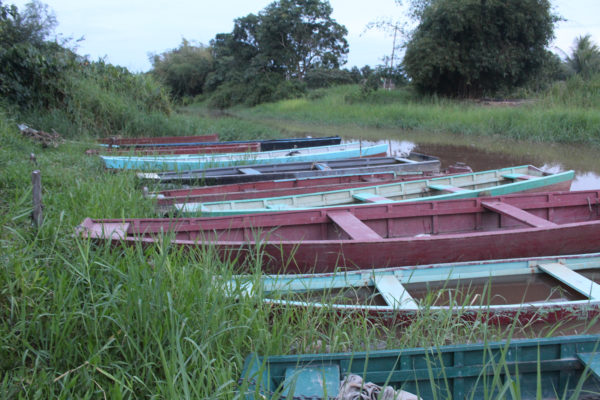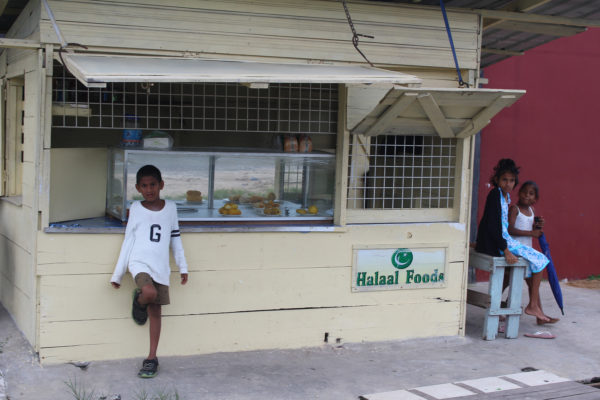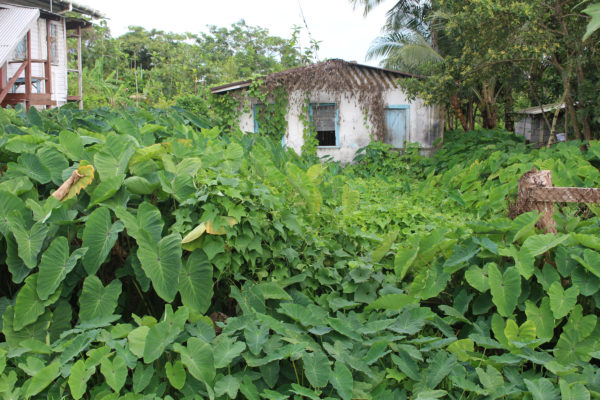Friendship, one of the longest villages on the East Bank Demerara situated 18 kilometres (nearly 12 miles) from the capital city, is home to some 3,000 people.
When the World Beyond Georgetown visited, grey clouds hung low overhead and small pools of water could be seen settled in the lowest parts of yards.
Though the weather was gloomy-looking, people were out and about, hanging at bars, snackettes and street corners or busy at work.
Fruit vendor Doreen Persaud sat at the side of her stall, with its neat display of mangoes, oranges, star apples, papayas, pineapples and jack fruits, awaiting customers.
“I was born in here on February 9, 1958,” she revealed. The 59-year-old woman starts her day at midnight, preparing to leave with her husband to sell ground provisions and fruits at the Stabroek Market. They sell their produce wholesale and retail from 2 am to 7 am. Once Persaud returns home, she gets lunch on the fire, takes a nap then puts out the remainder of her produce in front her home to continue selling until nightfall.
Vending for Persaud started when she was just 13 years old after the passing of her father. Her parents had a stall at the Better Hope Market. According to the woman, her father made sure he “put things in order” before he died by working tirelessly along with her mother to ensure they had not only food on the table but machines to make their work lighter in the backdam.
Donkey carts were the main mode of transportation and Persaud remembered that her parents would leave at 6 pm on Fridays to arrive at Better Hope Market by four or five the next morning to begin selling. After the market closed, they would leave with the remaining produce loaded on the donkey cart and begin the tiring journey home, arriving early Sunday morning. Her father, she also mentioned, was one of the first persons to build a house in the village.
Turning to schooling, Persaud shared, “Growing up we went to Craig Primary [situated two and half miles away]. We used to walk to school barefoot. Three of us, brother and sisters used to walk to school. Sometimes we walked till to Diamond Ground [almost six miles from Friendship] whenever they had games. Never mind the time was hard, it was good time; we had fun. Children used to enjoy [themselves] more. Children nowadays can’t get them time that. Back then you coulda sleep night time with your window and door open; now you got to frighten your own neighbours with how time going.”
Looking around, one could see the unbecoming state of the drains. “The NDC [Neighbourhood Democratic Council] doesn’t do anything,” she said. “The only time I does see them is when I got to pay rate and tax.
“Long time, the drains were up-to-date. Even the road and drains [leading] to the backdam were so good you coulda drive and go in. When me daddy dead, he dead in the backdam and a hearse drive in and bring he out. Now you can’t go in [through] there, it full ah bush. Now me see them ah dig the trench and mek back the dam; since me young they did dig it and only now they doing that.”
Obliquely opposite to where Persaud lives is a garment factory, Lall’s Garment Enterprise, which, according to Persaud, has been in existence for more than 20 years and employs some 30 workers. A customer who was purchasing fruits from Persaud said she believed the factory was partially responsible for the blockage of drains, since, according to her, the factory’s concrete bridge prevents the drain from being cleaned and has a buildup of sand beneath it.
One good thing Persaud mentioned about her village, is being able to access public transportation easily.
She does however wish it had better drainage, fewer blackouts and 24/7 potable water which she says goes sometimes for two or three days.
Dyal Budhram originates from Friendship as well. “In those days you hadn’t minibuses, but the locally made big buses. They used to take out the engine out of a truck, build it with wood and plain sheet and paint it. That was during the 1970s – 1980s. I went with those buses to school. Normally was ten cents for the bus one side; that was the school children price,” he said.
Dyal also recalled walking to school barefoot also and sometimes as far as Diamond to watch films at the Diamond Deluxe Cinema close by where the Diamond Hospital is situated today.
“Today most persons plant provision and back then was sugar cane. Some of the land belonged to GuySuCo but most were privately owned. This part of the village was owned by my grandfather, Isrie Persaud, who came from India. My grandfather while working at the Diamond Sugar Factory was crushed to death. My grandmother took ill after his death and died a few months later. A woman by the name of Elsie Persaud was left in charge of my mother and her siblings and the land. Before my mother and her siblings were old enough, Elsie had sold most of the land. We ended up in court over that; she didn’t make problem for the piece we were living on though,” Budhram shared.
According to him, Elsie Persaud is no more and whatever land wasn’t sold was inherited by her children.
Budhram’s plot of land that he lives on was noted to be higher than the surrounding yards and when asked about this he said, “Long ago the place used to get flood out when is Spring tide and the water overtop the banks. We could never go to school when the place flood out. The road used to flood and was sometimes under two feet of water. I build up the land so we don’t get flooding anymore but my neighbours do.”
Although the village has electricity and water, Budhram mentioned they’ve to put up with frequent blackouts while the water is off for a few days at a time. He recalled in the days before they were given potable water, he and many others pushed handcarts with barrels to Craig for water.
Budhram, a seaman, said he feels for the farmers in his village as they struggle each day to get in and out of their farms. Since what used to be the passageway to the backdam is blocked off, they use boats to get to and from the farms.
“I would like to see the road widen. I would like the streetlights not working to be fixed, better access roads to schemes… A lot of the trenches leading to and from the backdams are blocked up. The NDC [Craig NDC] needs to fix this. The farmers are suffering,” Budhram complained.
Mark Braithwaite, who was seated at a stall chatting with two other workers, thought to enquire about our visit to his village.
Braithwaite, a farmer, was born in New Amsterdam, Berbice and lived for a little bit in Georgetown before moving to Suriname in 1987. Upon returning in 1990, he enquired from a friend about places to farm and was directed to Friendship. He has been there ever since.
He lives on Kofi Dam named after the koker situated close by. “Friendship is a peaceful village,” he stated, “but at the same time business slow. You have to go out of Friendship to do business.”
According to the man, Kofi Dam has a small population of about 60 persons. In 1982, Marfriends Land Co-op Society then called Marfriends Agriculture Producers Society had decided that those who lived there would be given a hectare (two acres) of land for farming.
Braithwaite plants plantain, coconut and other fruits and rears ducks, pigs and creole fowls. “I do plantain on a large scale. I would go to Stabroek Market in the wee hours of the morning and sell. At first life as a farmer was difficult, a lot of struggles. But now we have a sluice; they put in a sluice at the back in 2014. Before then the land used to be swamped out. We have electricity, water and telephones in the dam and now we’re getting an all-weather road,” he said.
When he wanted to know a bit about the history of the place he had settled in, Braithwaite set about finding out from an older resident, who no longer lives in the village. The man, he said, told him that the village was bought by 13 slaves. He doesn’t know much more about the history but he does know that the village has eight kokers, only three of which are still functioning; four churches; an oxygen company; a gas station; lumberyards; Lexus Shipyard; nursery, secondary and remedial schools and a feed mill.
Friendship, he also proudly stated, was home to the late Habeeb Khan who he dubs as Guyana’s greatest comedian.
“One of the advantages of living here is it’s a quiet village, no stealing, robbery or dancehall parties going on here,” he stated.
The only disadvantage is water concerning the backlands. The swamps still exist to a certain extent. The National Drainage and Irrigation Authority is now in the process of fixing this. “We have already started on the digging of the canals and maintaining them,” Braithwaite said.
He is convinced that much more can be done for his village and added, “We do basically farming in this area. We should open a cassava and canning factory. Most of the framers plant the same thing. If we have a factory then we can stay right here instead of going outside of the village. If we can our produce, we can export. We can can ham, mutton, beef and goat. We have land that the government can utilize and put up a factory.
“I’d like to stress to the Agriculture Minister that we need better in this area. A cassava factory can make cassava flour which we can combine with wheat flour; cassava bread; cassareep; farine and cassava chips. The byproduct can make feed for persons rearing chickens.”
In addition, Braithwaite also said, in doing this, jobs will be created and persons within his village and outside of it can benefit.
